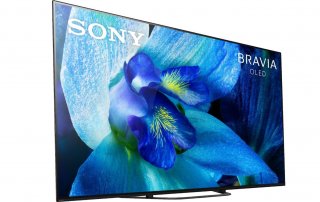OLED HDTVs Are Simply Amazing (But There's A Big Catch)
As in being super expensive.
If price points weren’t an issue, there is a pretty good chance that most of us would run out and get an OLED TV.
It really is a no-brainer. Comparing the available technologies that are on the market today, you can’t do any better than the picture quality on an OLED TV.
And yes, if you want this excellent product in your living room, you will have to pay up. For example, take a gander at this stark price difference: the LG 75-inch 4K Ultra HD NanoCell TV is currently going for $1,500, but the LG 77-inch 4K Ultra HD OLED TV is selling for $4,500. You could buy two more of the NanoCell TVs and still end up paying the same price.
So, why these elevated price tags for OLEDs? It’s in technology, of course. There are three basic TV technologies on the market today: OLED, QLED, and LCD. Unlike its LCD and QLED brethren, OLED TVs utilize self-emissive pixels.
When electricity passes through these pixels, which number in the millions in these TVs, they light up in different colors. The other advantage is that there are no longer dark pixels being lit from behind—that means no halos or light blooms that you might see on an LCD set. When OLED pixels can remain completely dark, the black color on your screen is basically 100 percent true.
OLED TVs also use additional white light to manufacture even more varied colors, which make for images that are more diverse, richer, and more accurate. Moreover, as an added bonus, OLED TVs can be designed slimmer and are environmentally friendly because they use less energy than their counterparts that depend on backlighting. There is one Achilles’ heel, though, and that is they are susceptible to image retention or burn-in.
Keep in mind that OLED technology is also relatively new, as U.S. consumers started enjoying these TVs only about seven years ago. At that time, LG’s first OLED TV, a 55-inch, had a whopping price tag of $10K. Obviously, those hefty prices have come down in recent years, and consumers are hoping that OLEDs continue to head even lower—perhaps eventually in the same ballpark as current QLED and LCD offerings.
Cheaper prices are indeed a real possibility with 4K OLEDs, but don’t hold your breath on the 8K panels that look to be more mainstream in the coming years. Not surprisingly, LG is already leading the way into this 8K technology, which boosts the number of pixels on a panel from 8.3 million to more than 33 million.
It appears that there will always be a market for well-heeled TV buyers.
Ethen Kim Lieser is a Tech Editor who has held posts at Google, The Korea Herald, Lincoln Journal Star, AsianWeek and Arirang TV. He currently resides in Minneapolis.

